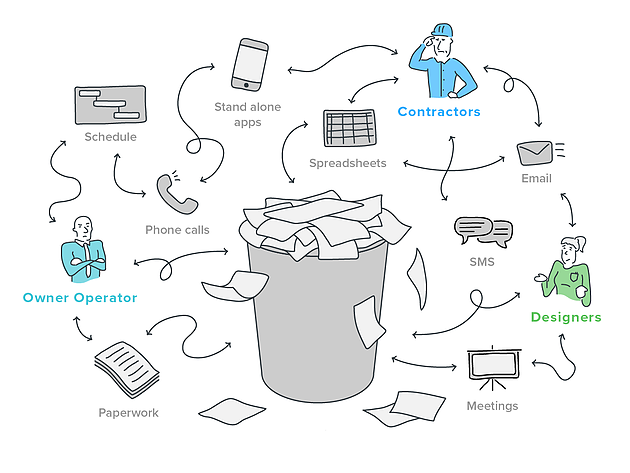Achieving Seamless Job Distribution: Designer's Comprehensive Approach to Building And Construction File Monitoring
One vital aspect typically underestimated is the management of building files, which serves as the foundation of every task. As architects browse the intricacies of sychronisation, layout, and implementation, a thorough method to record management emerges as a linchpin for accomplishing smooth task delivery.
Importance of Building File Administration
Effective construction file monitoring plays an essential function in ensuring job success by facilitating smooth interaction and organization throughout the construction procedure. By preserving accurate and current building and construction papers, architects can effectively connect with specialists, subcontractors, and other stakeholders entailed in the job. These papers act as a recommendation point for all events, guaranteeing that every person is working from the same collection of information and decreasing the probability of misconceptions or errors.
Moreover, construction record administration aids architects remain arranged by offering a central location for all project-related info, consisting of drawings, specifications, agreements, and communication. This organization allows and enhances the decision-making procedure for quick accessibility to crucial task details when needed. Furthermore, correct document administration can improve task efficiency, minimize pricey hold-ups, and ultimately result in the effective conclusion of construction projects. Designers that focus on building and construction document management set a strong structure for job success and show a commitment to providing high-grade results.
Key Components for Reliable Paperwork

Establishing standard design templates and methods guarantees uniformity throughout all project papers. Applying a robust file monitoring system that allows for version control, gain access to constraints, and audit trails significantly improves the organization and safety of task documentation. By incorporating these crucial components right into construction file administration methods, engineers can streamline processes, decrease errors, and eventually add to the effective distribution of tasks.
Making Use Of Technology for File Organization
Leveraging sophisticated electronic devices and software program systems is instrumental in enhancing the organization and ease of access of building paperwork. Architectural firms can improve their file administration procedures by carrying out specialized software application created for the building and construction sector. These devices provide features such as version control, cloud storage space, and collaborative editing abilities, making it possible for staff member to work on papers simultaneously and making sure everyone has access to the most up-to-date info.
One trick benefit of making use of modern technology for document organization is the capacity to create a centralized database for all project-related documents. By keeping files in a secure electronic atmosphere, architects can conveniently browse, obtain, and share information with stakeholders, decreasing the threat of variation conflicts or lost data. Furthermore, advanced software program options commonly incorporate metadata tagging and indexing functionalities, permitting individuals to classify papers efficiently and fetch them swiftly when needed.
Collaborative Strategies With Job Groups
To enhance task results, engineers should welcome collaborative strategies when dealing with task teams to make certain seamless interaction and coordination throughout the building process. Partnership with project teams is crucial for architects to properly manage building and construction projects. construction document management. By promoting open interaction and teamwork amongst all stakeholders, engineers can improve decision-making procedures, address potential problems proactively, and guarantee that every person is lined up with the task goals
Designers need to establish clear lines of communication with engineers, service providers, clients, and various other vital employee from the outset of the job. Routine conferences, progression updates, and feedback sessions must be see this here scheduled to keep everyone informed and involved. Using collective job management devices can additionally assist in real-time info sharing and file partnership, improving transparency and efficiency.

Finest Practices for File Variation Control

Final Thought
To conclude, reliable building record management is important for attaining smooth project distribution. By focusing on vital aspects such as version, collaboration, and company control, engineers can guarantee that all task teams are functioning from current and accurate details. Utilizing innovation can streamline the paperwork procedure and enhance total project performance. It is necessary for architects to apply best techniques in file monitoring to successfully browse the intricacies of building tasks.
Efficient building paper administration plays a vital duty in guaranteeing task success by assisting in seamless communication and company throughout the building procedure. Additionally, proper paper management can Extra resources improve job effectiveness, decrease pricey delays, and eventually lead to the successful conclusion of building and construction tasks.To optimize task end results, designers should embrace joint techniques when working with task groups to make sure seamless communication and control throughout the building and construction procedure. Partnership with project groups is crucial for engineers to successfully handle construction tasks.In the world of collaborative building and construction task management, maintaining specific control over document variations stands as a critical practice for ensuring task stability and communication.